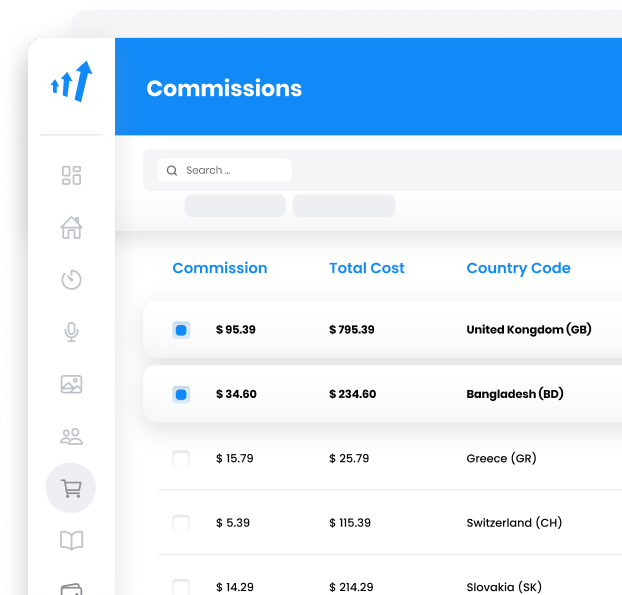What is click through?
Advertisers offer many different products and services. They pay affiliates for advertising them. Affiliates transfer traffic – visitors to merchant’s web site through different promotional materials.
Click through is a moment or action when a person – visitor – clicks on a banner, text link or on some advertising material. Visitor is then transferred to merchant’s website.
It is possible to measure the success of an advertising campaign by click through. Learn more about the Click through rate in our glossary.
Click-through refers to the action of clicking on a hyperlink, primarily in an online advertisement, which directs the user to another webpage. This term is integral to digital marketing and affiliate marketing, where understanding user interaction with advertisements is crucial. Click-through isn’t merely a basic metric; it serves as a pivotal component of online advertising strategies, influencing everything from ad placement to revenue models.

Click-Through Rate (CTR)
Click-through rate (CTR) is a key metric that quantifies the effectiveness of an online advertisement or marketing effort. It’s calculated by dividing the number of clicks on an ad by its total number of impressions (views), and then multiplying by 100 to express it as a percentage. For example, if an advertisement receives 100 clicks from 10,000 views, the CTR would be 1%.
CTR is significant because it provides insights into the relevance and appeal of an ad. A higher CTR indicates that the advertisement resonates well with its audience, prompting more users to click through to the advertiser’s site. In affiliate marketing, a high CTR can lead to increased conversions and, consequently, higher earnings for affiliates. Moreover, a high CTR can improve the ad’s Quality Score on platforms like Google Ads, thereby enhancing ad placement and reducing costs.
Calculating Click-Through Rate
The formula for calculating CTR is straightforward:
[ \text{CTR} = \left( \frac{\text{Number of Clicks}}{\text{Number of Impressions}} \right) \times 100 ]
This calculation helps marketers understand how well their ad is performing in terms of generating interest and interaction from viewers. A high CTR is typically associated with high relevance and effectiveness in capturing audience interest.
Click-Through in Affiliate Marketing
In affiliate marketing, click-through is a critical performance indicator. It measures how effective an affiliate’s marketing efforts are in persuading users to engage with a product or service by clicking on an advertised link. Affiliates earn commissions based on actions taken after a click-through, such as purchases or sign-ups, making this metric essential for evaluating the success of affiliate campaigns. This performance metric not only helps affiliates understand the efficacy of their promotional strategies but also influences their commission earnings and partnership longevity with merchants.
Importance of CTR in Affiliate Marketing
- Performance Measurement: CTR serves as a direct indicator of an ad’s performance. Affiliates can use CTR to assess which campaigns are most effective and which require optimization.
- Optimization and Strategy: Understanding CTR helps affiliates refine their marketing strategies. By analyzing CTR data, affiliates can identify successful keywords, ad placements, and creative elements that drive higher engagement.
- Comparative Analysis: CTR allows marketers to compare different campaigns or advertisements, highlighting which ads are more engaging and enabling affiliates to focus on those that deliver better results.
- Quality Score Impact: On platforms like Google Ads, CTR influences the Quality Score, a metric affecting ad placement and cost-per-click. A higher Quality Score can lead to better ad positions and lower advertising costs.
Factors Affecting Click-Through Rates
- Ad Relevance: Ads that closely match the user’s search intent or interest tend to achieve higher CTRs. Crafting relevant ad copy is crucial.
- Visual Appeal: Engaging visuals or videos can increase the likelihood of clicks. High-quality images and compelling design elements make ads more attractive.
- Call to Action (CTA): A strong and clear CTA encourages users to take the desired action, whether it’s to learn more, buy now, or sign up.
- Ad Placement: Ads placed in high-visibility areas, such as above the fold on a webpage or in prominent spots on search engine results pages, typically receive more clicks.
- Targeting: Precise audience targeting ensures that ads are shown to users who are more likely to be interested in the content, thus improving CTR.
Examples and Benchmarking
CTR benchmarks can vary significantly across industries and advertising platforms. For instance, a good CTR in the e-commerce sector might differ from that in the tech industry. Typical benchmarks suggest that a CTR above 2% is considered good for display ads, while search ads can have higher benchmarks due to user intent. Understanding these benchmarks helps marketers set realistic performance goals and measure their success against industry standards.
Improving Click-Through Rates
- A/B Testing: Running A/B tests on different ad elements such as headlines, images, and CTAs can help identify what works best in capturing audience attention.
- Keyword Optimization: Using relevant and high-performing keywords can enhance ad relevance and improve CTR.
- Personalization: Tailoring ads to specific audience segments can make them more appealing and increase the likelihood of clicks.
- Content Quality: Ensuring that the ad content is engaging, informative, and valuable to the target audience can boost CTR.
- Responsive Design: Ads optimized for various devices, especially mobile, improve user experience and increase click-through rates.
Challenges in Measuring Click-Through
- Bot Traffic: Automated clicks can skew CTR data, making it essential for marketers to filter out non-human traffic.
- Cookie Restrictions: Increased privacy measures and cookie restrictions may affect the accuracy of CTR tracking.
- Attribution Complexity: Linking click-throughs to actual conversions can be complex, especially in multi-channel marketing environments.
Frequently Asked Questions
What is a good click-through rate?
In most industries, a CTR of above 6% is considered good.
How can I calculate click-through rate?
Click-through rate is calculated by taking the number of ad clicks and dividing it by the number of ad impressions.
Overview of Post Affiliate Network
Discover the power of Post Affiliate Network for managing affiliate programs across multiple brands from a single account.
Join the Rize Ads Affiliate Program for lucrative partnerships and high commissions with leading brands. Benefit from a streamlined management platform, powerful analytics, and diverse income opportunities. With a 5% commission rate, monthly payouts starting at $500, and worldwide acceptance, unlock your earning potential now!
A guide to different types of affiliate tracking
Explore the comprehensive guide on affiliate tracking methods like cookie, postback URL, and IP tracking to optimize your affiliate marketing strategy. Learn how Post Affiliate Pro's advanced software ensures precise tracking, maximizes sales, and provides exceptional support for seamless affiliate cooperation. Unlock your brand's potential with cutting-edge tracking solutions today!
Discover Post Affiliate Pro's flexible pricing plans tailored to fit your business needs, with options for Pro, Ultimate, and Network packages. Enjoy a free trial with no credit card required, no setup fees, and the freedom to cancel anytime. Benefit from features like unlimited affiliates, advanced reporting, customizable interfaces, and lifetime support. Save up to 20% with annual billing and take advantage of more than 220 integrations. Perfect for businesses seeking to enhance their affiliate marketing efforts. Visit now to find the ideal plan for you!
Explore Post Affiliate Pro's comprehensive Affiliate Marketing Glossary to enhance your industry knowledge with easy-to-understand definitions of essential terms. Perfect for marketers seeking to understand the fundamentals and advanced concepts, this glossary helps you master the language of affiliate marketing. Visit now to boost your expertise!









